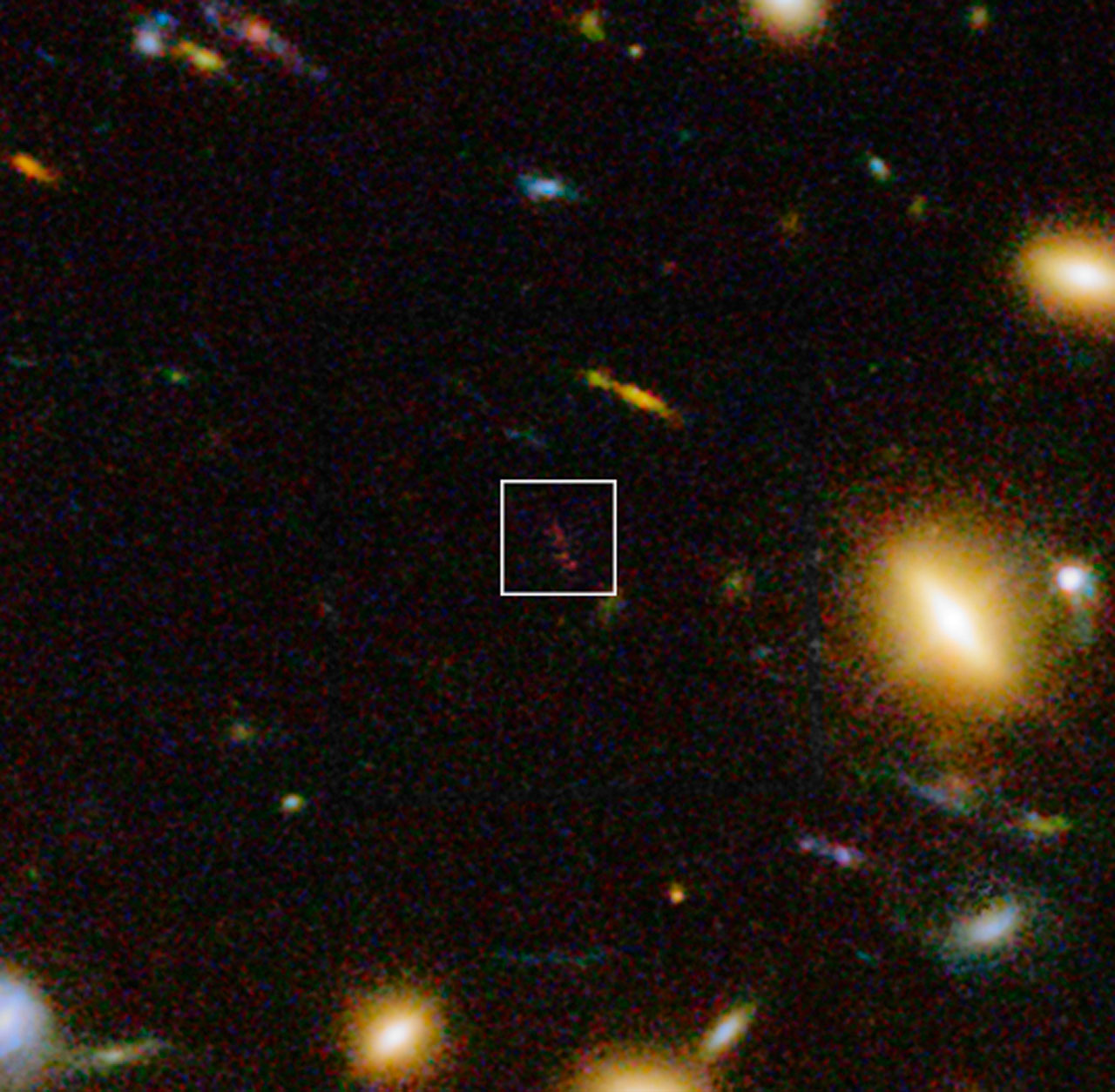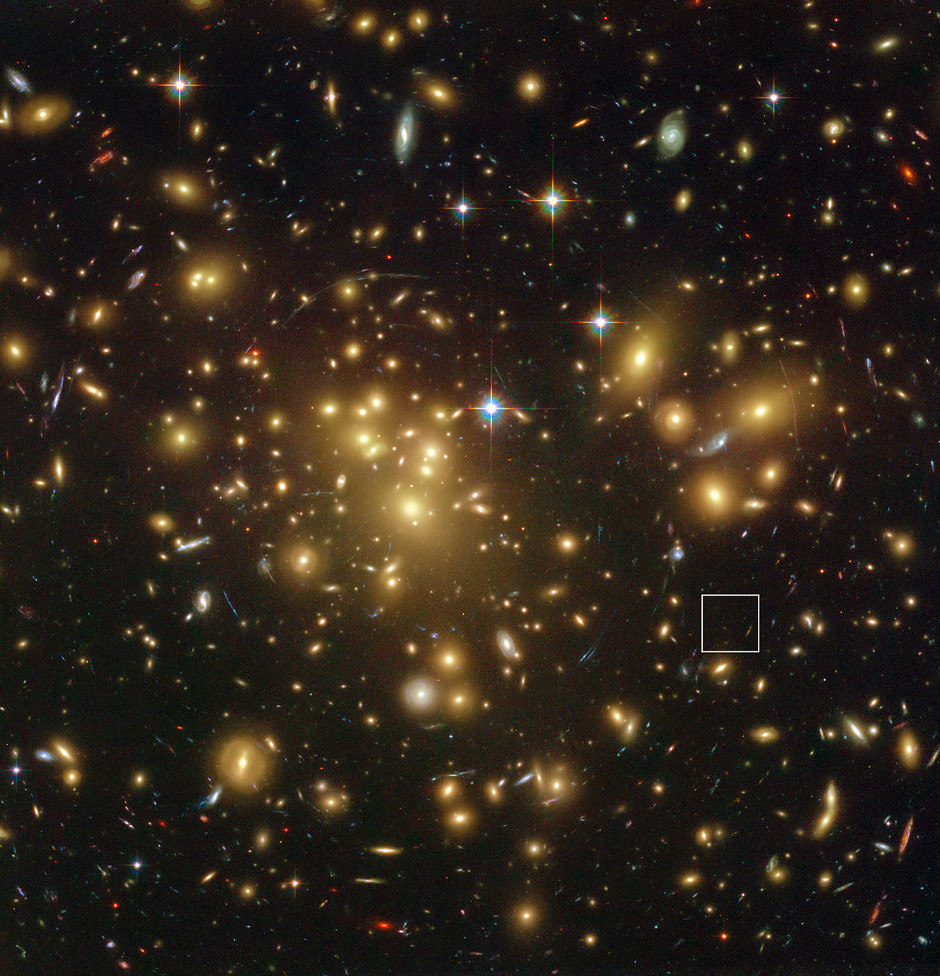A1689-zD1
A1689 - Zd1 with a redshift of z = ~ 7.6 one of the most distant known galaxies in general. The discovery with the help of the Hubble Space Telescope was announced in February 2008.
Formation
A1689 - Zd1 was only about 700 million years after the Big Bang in the so-called Dark Ages of the Cosmos. According to current theories of the Dark Age began about 400,000 years after the beginning of the universe. Due to the expansion of the universe is cooled and formed clouds of cold hydrogen, as the dense fog in the universe extended. At some point, the first stars and galaxies whose radiation heated up the surrounding area and the "fog" sales. It is believed today that the "dark age" was about a billion years after the Big Bang to the end.
Discovery
The space telescope could see the distant galaxy using only the weak gravitational lensing, which is based on the procedure described in the general theory of relativity curvature of space by the action of gravity on the spacetime: Abell 1689, an about 2.2 billion light years from Earth distant galaxy clusters, prevented by its gravity, the light behind him standing, distant celestial objects, thereby increasing their images like a natural motion. Only by this gravitational lens, the primordial galaxy could be detected by the Hubble telescope. The infrared Spitzer Space Telescope also supplied by detecting the radiant light in the infrared region of A1689 - Zd1 strong evidence for countless new stars in the then young galaxy, which has only a fraction of the mass of our Milky Way.
Swell
- Individual galaxy
- Virgo ( constellation )










